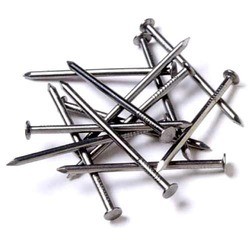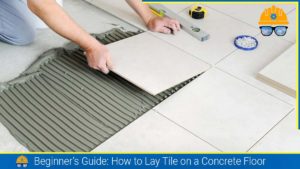Steel is one of the most commonly used building materials besides concrete. About 30 to 60% of the material used in the construction project is steel. In this article, we will be looking at types of steel, the application of steel in construction, advantages and disadvantages of steel.
What is Steels?
Steels are an alloy of iron and carbon. They always contain very small amounts of other elements, either as impurities or alloying elements. It contains 95% more iron and 1 –2% carbon, smaller amounts (around 1.6%) of manganese, and nickel to improve certain properties. The presence of carbon improves the strength of the steel.
Types of Steels
Steels are classified into the following types: –
- Low Carbon steel
- Medium carbon steel
- High Carbon steel
- Cast Iron
- Alloy steel
- Stainless steel
Low-carbon steel contains 0.05% to 0.32% of carbon in it. This type of steel is often called Mild steel. The properties of low carbon steels are: –
- Tough, ductile and malleable
- Easily joined and welded
- Poor resistance to corrosion
- Often used for general-purpose material
Used for making structural steel in the construction industries, car bodies, nails, screws, etc.

Medium Carbon Steel
Medium carbon steel contains 0.35% – 0.5% of carbon in it. The properties of medium carbon steels are: –
- Offer more strength and hardness
- Less ductile and malleable
Structural steel, garden tools, and rails are made from medium carbon steel.
High Carbon Steel
This type of steel contains about 0.55%-1.5% of carbon. This type of steel is known as tool steel as they are used for making steel tools. The properties of High carbon steel are as follows: –
- Very hard and offers Higher strength.
- Less ductile and
- less malleable
Used for making Hand tools ( like chisels, punches) and Saw blades.
Cast Iron
Cast iron has more carbon. They have about 2%-4% carbon contained in them. The properties of this type of steel are as follows: –
- Very hard and brittle
- Strong under compression
- Suitable for casting [can be poured at a relatively low temperature]
Used to make Engine blocks, engineer vices, machine parts, etc.
Alloy Steels
These are the steels which are mixed with a variety of elements between 1% to 50% by weight to improve their mechanical properties. The common alloying elements are molybdenum, manganese, nickel, chromium, vanadium, silicon and boron. Alloy steels are of the following types: –
- Low alloy steel
- High alloy steel
Depending upon the amount of alloying elements added to iron it is classified as low and high alloy steel. Among the two types of alloy steel, low alloy steel is most commonly used. Alloy steel has a higher strength compared to carbon steel. Thus, heat treatment is required to achieve the properties mentioned below: –
- Have greater strength and hardness and hot hardness.
- Resistance to wear.
- Has higher toughness compared to carbon steel?
The table below shows the alloying element and their effects on steel.
| Alloying Element | Effects |
|---|---|
| Boron | It is very effective in increasing the hardness of low and medium-carbon steel It has no effect on the tensile strength of steel |
| Chromium | It makes steel tough and hard It also refines the grain structure Increases resistance of steel |
| Cobalt | It is commonly used in high-speed steels to increase hot hardness. Such examples are cutting tools. It increases magnetism and coercive magnetic force in steel. |
| Copper | Lowers the critical temperature It improves resistance to atmospheric corrosion property |
| Nickel | Increases the critical range of temperature It increases tensile strength without decreasing ductility |
| Manganese | Is added as a deoxidizing and desulphurizing agent It lowers the critical range of temperature |
| Silicon | Deoxidizing agent It makes low carbon brittle and high magnetic permeability |
| Vanadium | Used to toughen or strengthen the steel Also used to reduce grain size and to act as a cleanser and detoxifier Has the desirable effect of increasing tool life |
| Titanium | It improves the hardness of the steel It deoxidizes steel |
| Tungsten | It is widely used in tool steels because the tool maintains its hardness even at red heat |
Advantages
- High strength and low weight – good for long-span bridges, and tall buildings.
- Steel is lighter than concrete and it is easy to handle and transport, and prefabricated.
- Properly maintained it has a long life.
- Uniformity properties do not change with time.
- A ductile material does not fail suddenly but gives visible evidence of failure by large deflections.
- Additions and alterations can be easily done with the steel structure.
- It is much faster to erect steel structures compared to reinforced concrete.
- Steel has the highest scrap value.
- Can be even reused for demolition.
Disadvantages
- Steels are especially susceptible to corrosion when exposed to air. It requires painting on the surface. This induces high maintenance costs.
- Poor fire resistance due to which needs fireproof treatment. This leads to an increase in cost.
- Fatigue – strength reduced if a large number of stress reversals.
Also, read: Structural Steel 101: A Comprehensive Guide To Mastering The Basics And Beyond
![]()







